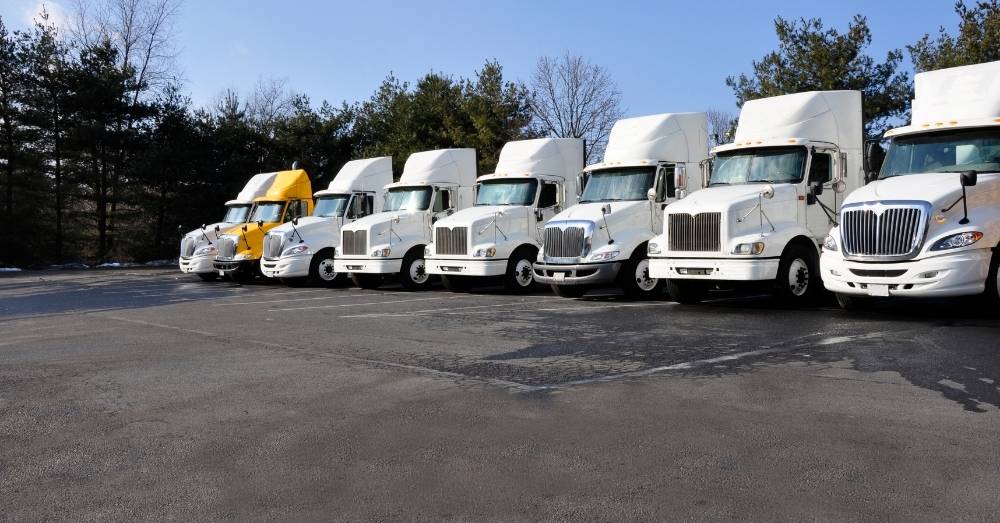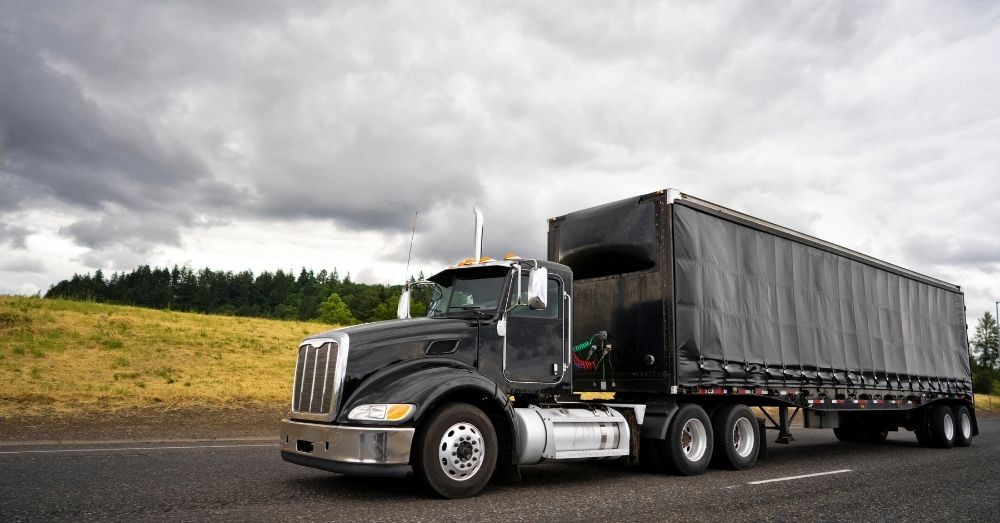Table of Contents
Key Takeaways
✔ A Conestoga trailer operates with a sliding tarp system that protects cargo from the elements while allowing easy side, rear, or top access for loading.
✔Different Conestoga trailer types—flatbed, step-deck, and double-drop—are designed to handle various cargo heights and weights safely.
✔These trailers are widely used in construction, manufacturing, and automotive industries for their flexibility and cargo protection.
✔Unlike a standard flatbed, a Conestoga trailer offers full weather coverage and safer, faster access without manual tarping.
✔The 80/20 towing rule encourages using only 80% of a vehicle’s maximum capacity to enhance control, reduce wear, and ensure safer transport.
A Conestoga trailer is a flatbed trailer with an integrated, sliding tarp system that encloses the cargo for weather and debris protection, much like a box truck but with open-deck versatility. It works by using a retractable curtain, or tarp, that rolls along parallel rails on the trailer’s sides, making it easy to cover and uncover the load from the sides, rear, or top without having to manually secure it to the cargo.
How a Conestoga Trailer Works
A Conestoga trailer works through a sliding tarp system that completely covers the load while allowing easy access for loading and unloading. The system is built around a frame that runs on tracks or rails along the sides of the trailer, making the tarp move smoothly back and forth.
1. Sliding Tarp System
The main feature is the sliding tarp system, which consists of a large, durable tarp connected to a metal frame. This frame moves along rails that stretch the full length of the trailer. When the tarp is closed, it tightly seals the load, providing protection similar to a box trailer.
2. Loading and Unloading
To load or unload, the driver slides the tarp open using a simple crank or by manually pushing the frame toward one end. Once open, the entire length of the trailer bed is accessible. This means forklifts and cranes can load cargo from the sides, rear, or even above. For Conestoga truck operators, this feature makes it easier to handle loads of various shapes and sizes without the struggle of climbing or securing tarps manually.
3. Securing the Cargo
After the cargo is placed and secured, the driver slides the tarp back into position. The edges are locked in place along the sides, creating a weather-tight seal. The flatbed Conestoga system eliminates the need for ropes, straps, and tarps that take time to tie down, making it a faster and safer option.
4. Protection
The protective tarp shields the cargo from rain, snow, and dirt. For example, when goods are being transported to or from warehousing NYC, this coverage ensures that materials arrive clean, dry, and undamaged. It’s a practical solution for businesses that value reliability in every shipment.

3 Common Types of Conestoga Trailers
There are several types of Conestoga trailers, each designed for specific transport needs. These types differ in deck height and capacity, allowing them to handle different types of cargo.
1. Flatbed Conestoga
The standard flatbed Conestoga has a single-level deck similar to a regular flatbed trailer. It’s best for general freight, building materials, and equipment that fits within normal height limits.
2. Step-Deck Conestoga
A step-deck Conestoga trailer features a lower main deck and a shorter upper deck. This design allows it to carry taller loads that would otherwise exceed the legal height limit of a flatbed. Industries like manufacturing and construction often use this style for tall machinery and structures.
3. Double-Drop Conestoga
The double-drop Conestoga has an even lower central deck, perfect for hauling very tall or oversized equipment. Heavy machinery or industrial components that require stability and protection fit well in this configuration.
Each design allows shippers to match the trailer to the cargo’s shape and size. The combination of flexibility and protection makes the Conestoga truck one of the most practical solutions for modern freight needs.
Typical Use Cases of a Conestoga Trailer
The Conestoga flatbed plays a vital role across industries that require both cargo protection and flexible loading capabilities. Its popularity continues to rise, supported by a market projected to grow at a 6.2% CAGR from 2025 to 2033, reaching an estimated USD 2.53 billion in value by 2033.
This growth is largely driven by increased focus on cargo safety and operational efficiency within logistics, construction, and manufacturing, as well as ongoing innovations in trailer system design and automation.
1. Construction
In construction, a Conestoga trailer is used to move heavy machinery, steel beams, and building supplies. These materials are often exposed to harsh outdoor conditions, so the tarp enclosure keeps them protected from moisture and dust. This is particularly useful for deliveries to urban areas like warehousing NYC, where efficiency and cleanliness are essential.
2. Manufacturing
Manufacturing industries use the Conestoga truck to transport sensitive machinery and parts. These items often have delicate finishes or electronic components that can’t get wet. The sliding tarp design helps companies load large machines without the risk of damaging them while keeping them covered throughout the trip.
3. Automotive
In the automotive industry, a Conestoga flatbed is ideal for moving engines, car parts, and assemblies. The tarp system ensures that components arrive free from dust and corrosion. Manufacturers and distributors rely on this method when shipping across long distances or to storage hubs such as warehousing NYC facilities.

What Distinguishes a Conestoga Trailer From a Flatbed Trailer?
The biggest difference between a Conestoga trailer and a regular flatbed trailer is the level of protection and convenience. A traditional flatbed leaves cargo exposed, requiring tarps and straps to keep it covered. In contrast, a flatbed Conestoga uses a retractable tarp system that covers the load securely and can be opened quickly for access.
Key Differences Include:
- Protection: The Conestoga flatbed keeps cargo shielded from weather, unlike open flatbeds.
- Loading Options: The sliding tarp allows side, rear, or top loading, while flatbeds usually require rear or crane loading.
- Safety: The driver doesn’t need to climb onto the load or manually fasten tarps, reducing accident risks.
Because of these advantages, many freight companies have switched to the Conestoga truck for sensitive or high-value shipments. This design combines the flexibility of a flatbed with the safety of an enclosed trailer—an essential feature for demanding operations like warehousing NYC and nationwide logistics.
How Does the 80/20 Rule Apply to Safe Towing?
The 80/20 towing guideline suggests using only about 80% of a vehicle’s maximum towing capacity for optimal safety and control. This practice helps reduce strain on the engine, brakes, and suspension while minimizing the risk of trailer sway or equipment damage.
- Prevents overloading and mechanical stress.
- Improves braking response and steering stability.
- Extends vehicle and trailer lifespan.
By maintaining this balance, operators ensure safer, more reliable hauling performance for both short and long-distance transport.
Frequently Asked Questions
How long does it take to load a Conestoga trailer?
Loading and unloading are much faster than with standard flatbeds, as the tarp system slides smoothly along the frame for full access. Forklifts and cranes can reach cargo from any side, streamlining movement in busy industrial zones. With the rise of Automated Conestoga Systems—now widely adopted by logistics providers and fleet operators—hydraulic or electric-powered retractable tarps further reduce handling time, improve safety, and boost overall productivity on every haul.
Are Conestoga trailers weatherproof?
While not fully airtight, Conestoga trailers provide strong resistance against rain, snow, and debris. The sliding tarp system creates a weather-tight barrier that shields cargo from exposure. This makes them suitable for hauling goods in changing weather conditions.
Do Conestoga trailers require special maintenance?
Maintenance involves checking tarp integrity, roller tracks, and locking mechanisms. Regular inspections keep the frame sliding smoothly and prevent damage from friction or debris. Basic upkeep ensures dependable performance for long-term hauling.
How do Conestoga trailers improve loading safety?
They eliminate the need for workers to climb onto loads or secure tarps manually. This reduces the risk of slips and injuries during preparation or unloading. The side-access system makes handling safer and more ergonomic.
What is the typical lifespan of a Conestoga trailer?
With regular maintenance, a Conestoga trailer can last over a decade. Longevity depends on usage frequency, terrain conditions, and care of the tarp system. Proper cleaning and inspections help extend its service life.

Strengthen Warehousing Operations Across New York, NY!
Managing warehousing in New York, NY demands precision, organization, and trusted logistics coordination. Warehousing NYC By Best provides tailored solutions that enhance storage efficiency, material handling, and cargo flow across multiple facilities. With experience in local and regional distribution, every service is designed to maintain productivity and meet demanding schedules within New York, NY.
Connect with Warehousing NYC By Best today to arrange professional warehousing and logistics support in New York, NY.

